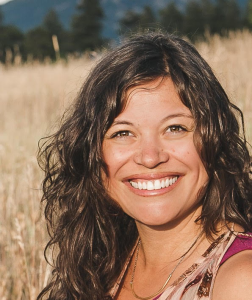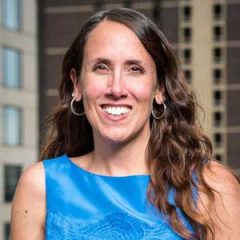Denver Public Schools’ ambitious Denver Plan set forth a goal of having 80 percent of students in high-quality schools by 2020. Yet as of 2016, only 43% of Denver’s students of color attended top-performing schools, compared to 70% of its white students. Meanwhile, the district has entered a period of declining enrollment and space in public facilities is constrained. As strong school operators are starting to expand out-of-district – what are the implications for Denver students? What obstacles are preventing Denver from doing more, faster? How do we scale success?
Moderator: Erica Meltzer, Bureau Chief, Chalkbeat Colorado
Panelists:
- James Cryan, Chief Executive Officer, Rocky Mountain Prep
- Jane Ellis, Executive Director, Colorado Charter Facility Solutions
- Brian Eschbacher, Executive Director, Office of Planning & Analysis, DPS
- Alex Magaña, Executive Principal, Beacon Network Schools
SESSION SUMMARY
Demographics, Housing Costs Threaten Drive for School Innovation
By Alan Gottlieb, Write.Edit.Think.
Denver’s recent history of school innovation has sparked significant improvement in student outcomes. But as enrollment declines and the pool of available school buildings dries up, continued gains will be tougher to achieve. Cutting-edge schools and networks may look outside the city limits for opportunities, unless something changes.
The solution? Doing the tough work of addressing existing low-performing schools with proven models and promising new schools.
That was the consensus of the “Scaling Success” panel at “Schools as the Unit of Change,” a convening of Denver educators and advocates hosted by the Gates Family Foundation in April.
After a decade of steady enrollment growth, Denver Public Schools is on the cusp of a protracted period of declining enrollment – 800 fewer kids at each grade level. That drop has already hit grades K-2, and will continue rolling up through the system in coming years, said Brian Eschbacher, DPS’ executive director of planning and enrollment services.
The soaring cost of housing in Denver, coupled with a drop in birth rates that began with the Great Recession has caused the decline in school-aged children. “No amount of recruiting or housing policy changes can recruit kids who weren’t born,” Eschbacher said.
Because of earlier enrollment growth, though, all DPS-owned facilities are filled with district-run schools or charter schools. This means new charter schools, as well replications of successful charters and district schools can’t open because there’s nowhere in Denver to locate them.
Networks like James Cryan’s Rocky Mountain Prep (RMP) have started looking outside Denver for expansion opportunities. RMP has opened in Aurora’s Fletcher Elementary School at the request of Superintendent Rico Munn.
“Our strategy at Rocky Mountain Prep has been simple,” Cryan said. “We have been responsive to where there are needs for great schools for kids. But thousands of Denver kids continue to languish in low-performing schools, while proven models wait in the wings.”
“It is time to have a new conversation around what we want the next five to 10 years to look like in terms of strategy and how we get there,” Cryan said.
Meanwhile some of Denver’s most highly rated (blue and green) charter and district schools have empty seats, for the first time in recent memory.
In theory, Eschbacher said, “that’s a good problem to have. We want to maximize the fill rate of our blue and green schools.” Open seats mean opportunities for kids to attend great schools. The key is helping families understand what quality looks like, so they vote with their feet and fill those high-quality seats.
If this were to occur, enrollment in low-quality schools would drop, creating opportunities for new schools that have been stymied by the current logjam. In fact, that suggests a strategy some charters might employ, suggested Jane Ellis, executive director Denver-based Colorado Charter Facility School Solutions.
While finding a private facility in which to open can create a crushing financial burden on charters – as much of 20 percent of operating revenue – getting a short-term lease on a building near a low-performing school could lead to the district building becoming available to the new charter, if it performs well, Ellis said.
The key is “to do a great job” so the district wants to invite the charter in, she said.
But school closures are politically fraught, and the Denver school board’s appetite for closing schools seems to have diminished over time.
High-quality district-run schools that want to replicate face similar challenges. Alex Magaña, executive principal of the Beacon network of two innovation middle schools, would also like to open additional schools. At the moment, it’s hard to see wherein Denver that could happen.
Would he consider looking in other districts for expansion? “I see opportunities there. It has really pushed my thinking,” Magaña said.
Back to ‘Schools as the Unit of Change: Building on Progress in Denver’











 Finally, also in 2023 a total of $410,956 previously committed by Gates to the
Finally, also in 2023 a total of $410,956 previously committed by Gates to the 



 A total of $1,110,956 committed to the
A total of $1,110,956 committed to the  In 2019, the Community Development program committed $932,500 in strategic grants to 13 organizations and $465,000 in responsive capital grants to 12 organizations. New impact investments supporting vibrant communities in 2019 included a $500,000 MRI to
In 2019, the Community Development program committed $932,500 in strategic grants to 13 organizations and $465,000 in responsive capital grants to 12 organizations. New impact investments supporting vibrant communities in 2019 included a $500,000 MRI to  Our Focus Landscapes initiative, a key element of our Natural Resources program, underwent a comprehensive review, revision, and re-launch in 2019. This initiative was launched in 2011 to help Colorado achieve landscape-scale conservation through the protection of private lands in specific geographies. A great deal of progress was made in North Park, southeast Colorado, and the San Luis Valley, resulting in more than 200,000 acres of farm and ranch lands conserved, along with their associated ecological values. The strategic review process was done in close partnership with the land trust organizations representing those geographies, providing lessons-learned and an exploration of emerging opportunities. The revised Focus Landscapes initiative will first focus on two geographies:
Our Focus Landscapes initiative, a key element of our Natural Resources program, underwent a comprehensive review, revision, and re-launch in 2019. This initiative was launched in 2011 to help Colorado achieve landscape-scale conservation through the protection of private lands in specific geographies. A great deal of progress was made in North Park, southeast Colorado, and the San Luis Valley, resulting in more than 200,000 acres of farm and ranch lands conserved, along with their associated ecological values. The strategic review process was done in close partnership with the land trust organizations representing those geographies, providing lessons-learned and an exploration of emerging opportunities. The revised Focus Landscapes initiative will first focus on two geographies: 